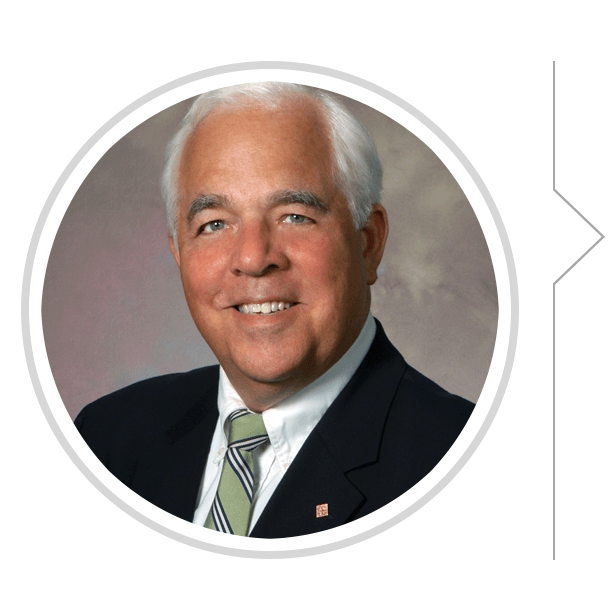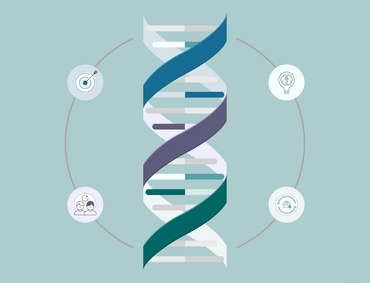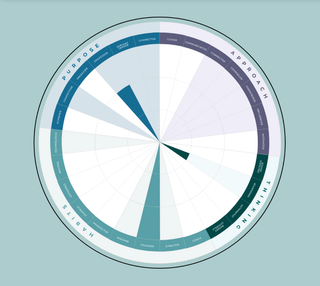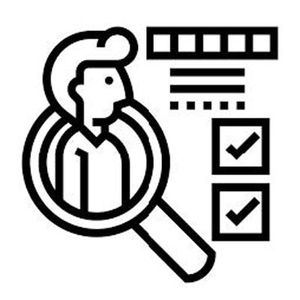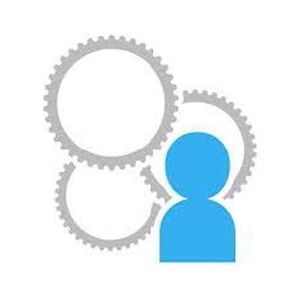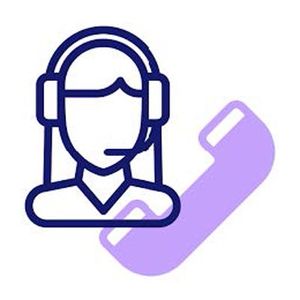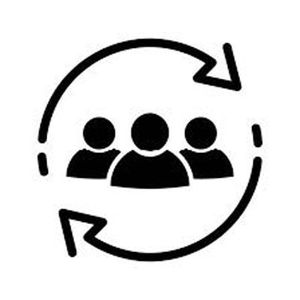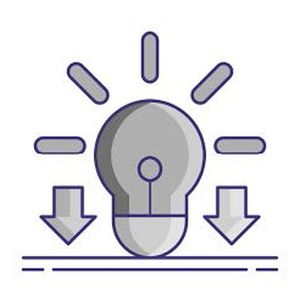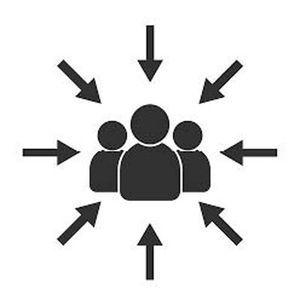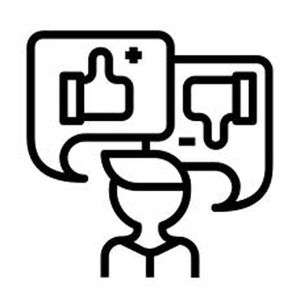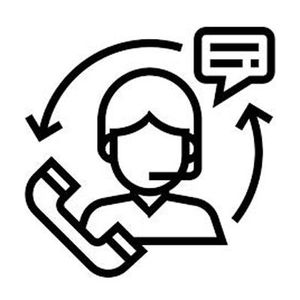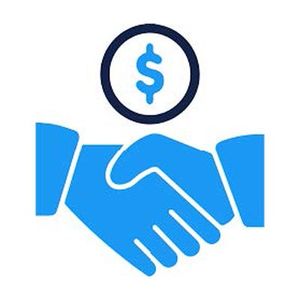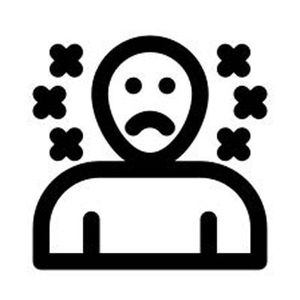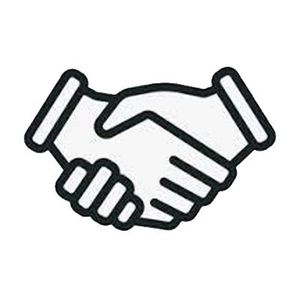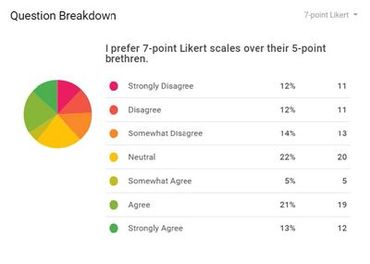Building employee trust and customer loyalty into organic revenue growth.
Using the science of predictive behavioral modeling to select and keep the right people in the right jobs increases productivity and becomes the foundation for delighting loyal customers.
BUSINESS TO BUSINESS EMPLOYEE AND CUSTOMER RELATIONSHIPS

The Barnabas of Business Relationships
Building employee trust and customer loyalty into organic revenue growth.
Using the science of predictive behavioral modeling to select and keep the right people in the right jobs increases productivity and becomes the foundation for delighting loyal customers.
BUSINESS TO BUSINESS EMPLOYEE AND CUSTOMER RELATIONSHIPS

We Focus on Trust and Relationships
- Trust is the most valuable promise you can make to your employees and customers
- Trust opens the door to new relationships and new relationships open the door to your best employees and best customers
- The Covid era of limited face to face personal and professional visits has shifted the corporate value proposition to trust in employee and business relationships
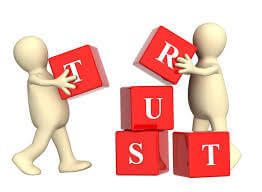
Why:
- Relationships with customers and employees are the foundation of a sustainable businesses
- Loyalty of Employees measurably impact Customer Loyalty
- Why now? In this age of complexity, uncertainty, deconstruction, and unintentional consequences, leadership has shifted from a clear vision of the future to character and culture built on trust
- We are ending an era of perceived self-control. We are facing things down the road that we can not predict and have not seen before. This has become a non-linear world where process driven solutions are less effective
- Returning to revenue built not on contracts but on relationships and the “Golden Rule: Treat others like you want to be treated”
Our Promise:
We will screen and score new job candidates for the best fit in specific roles within your company. Then, follow new hires into their role collecting feedback to better score new candidates and identify drivers of trust and loyalty in the role. This employee trust and loyalty is then mathematically modeled into drivers of customer trust, loyalty and organic revenue growth.
How:
Hunter has partnered with GoodJob (www.GoodJob.io) to provide the behavioral information needed to select the right person for the right job. The process is a continuously improving cycle where observations of employee performance in the role feed recommendations – strengthening and boosting productivity.
To select the right person for the right job requires:
- Matching the behavior of the candidate to the behavioral profile of the role
- Matching the chemistry of the candidate to the culture of the company
- Assessing the skills of the candidate against the capability, time, and effort to train the candidate to perform in the role successfully
Hunter has confirmed from 30 years of experience that the foundation for selection of the right person for the right job is in matching the behavior of the candidate to the behavioral profile of the role. Too often, employers hire on the skill they see in the resume assuming a behavioral fit based on performance in a similar role, only to then fire on chemistry.
We provide the tools, processes and support to:
- Delineate the critical behaviors for a role
- Profile each candidate’s behaviors
- Match the best candidates for a role based on these behaviors
We engage with the employee to:
- Track the performance of the employee in the role
- Continually improve performance and productivity through diagnostics on the behavioral fit [of employees and role] to performance of employees
- Delineate the two or three unique drivers of employee trust and loyalty in your corporate culture
- Mathematically calculate which supporting activities and pain points have the greatest impact on these drivers
- Continuously gather feedback on reducing employee pain points and the improvement of the drivers of trust and loyalty.
- Determine the attributes and drivers of employee trust and loyalty to improve employee retention and delight customers
We then engage with the Customer to:
- Delineate the two or three unique drivers of Customer trust and loyalty in your corporate culture
- Mathematically calculate which supporting activities and pain points have the greatest impact on these drivers
- Continuously gather feedback on reducing customer pain points and the improvement of the drivers of trust and loyalty.
- Determine the attributes and drivers of customer trust and loyalty to improve customer retention and delight customers
Service Profit Chain: Our Foundation
The foundation for the Hunter business to business focus on Trust and Loyalty began in the early 1980’s. Vic Hunter was a part of a team of professors and business leaders who met to explore what drove differentiated profit within industry sectors. The research and practices from that work became the foundation for “The Service Profit Chain”
A current review of this work is offered by Connor Brooke in the following article.
The service profit chain dissects the levers that translate good service into profitability. The outcome of quantifying and understanding these levers for the companies that have done it is an increased focus on empowering employees.
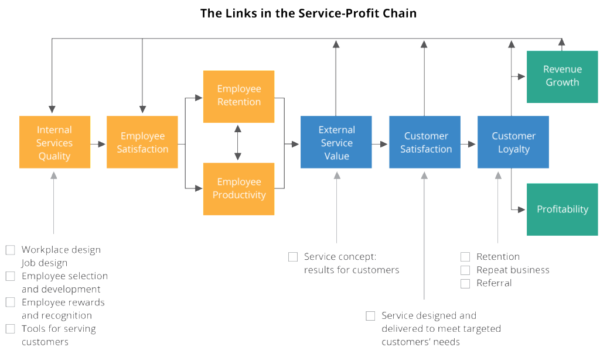
Leaders who understand the service-profit chain develop and maintain a corporate culture centered on service to customers and fellow employees. They display a willingness and ability to listen.
I believe that organizations can accomplish this by connecting front line workers more effectively with leadership through vertical collaboration. More specifically, the following key processes and organizational muscles should be focused on: having a good customer feedback loop; having a good employee feedback loop; and having a good process for making sure input, feedback and ideas get actioned.
What is the Service Profit Chain?
The Service-Profit Chain is a theory and business model evolved by a group of researchers from Harvard University in the nineties. It establishes relationships between profitability, customer loyalty, employee satisfaction, loyalty, and productivity. Profit and growth are stimulated primarily by customer loyalty. Loyalty is a direct result of customer satisfaction. Satisfaction is largely influenced by the value of services provided to customers. Value is created by satisfied, loyal, and productive employees. Employee satisfaction, in turn, results primarily from high-quality support services and policies that enable employees to deliver results to customers.
Improving Service Profit Chain Levers
1. CREATE A CUSTOMER FEEDBACK LOOP
With the service profit chain, the ultimate measure is customer loyalty. To get there, organizations should focus on creating satisfied customers by providing great value. This is easy to understand, but of course not easy to do.
Understanding what customers value is difficult for two reasons. First, unless you’re a small startup, it’s difficult for leaders to stay in close, direct contact with customers. The larger the organization, the more complicated this becomes. The second reason is that customers aren’t actually very good at explaining what they want and why. If we just listened to our customers verbatim, we’d likely miss many important opportunities to provide more value.
To deal with these challenges (and in addition to other measures such as NPS) I believe it’s best to use front line employees to create a customer feedback loop. Frontline employees can be trained to understand how to translate customer feedback into useful input and the right tools and processes can provide structure that’s more actionable at scale.
2. CREATE AN EMPLOYEE FEEDBACK LOOP
Frontline employees are critical to a great customer experience. In the service profit chain, this translates to empowering employees to do their jobs well and increasing their motivation to provide great service. Similar to customer feedback loops, creating a feedback loop for frontline employees is key to unearthing the problems that hurt productivity, satisfaction and ultimately loyalty. In his acclaimed study “The Iceberg of Ignorance”, consultant Sidney Yoshida concluded:
“Only 4% of an organization’s frontline problems are known by top management, 9% are known by middle management, 74% by supervisors and 100% by employees…”
If this is even half true at your organization, you can see why it’s critical to have a better way to collect, structure, and action the significant number of problems you don’t have knowledge of.
3. CREATE PROCESSES TO ACTION INPUT
Armed with great input and feedback, it’s important to have a good process in place that biases action over analysis. Multiple studies show that a focus on implementing known solutions has a bigger impact on customer satisfaction than analysis and focusing on bigger issues. Coming with ideas on how to improve customer satisfaction is not typically the issue, the knowledge already exists within the organization. The bigger issue is that often these ideas don’t progress because:
- The individual with the solution doesn’t have the resources needed to implement it
- The origin of the problem and solution exists elsewhere in the organization
- Many of small, good ideas slip through the cracks and never get actioned
This is where a better connection between frontline employees and leadership can become key. With leadership support and the right tools and processes, leaders can ensure that solutions get the needed resources, the right cross-functional collaboration happens, and they appropriately prioritize input by shining a stronger light on all the solutions and assigning accountability.
Economic Impact:
- Lower financial and human capital investments in new employee hiring- lower employee turnover
- Higher employee productivity
- Retention of customer revenue stream
- Improved gross margin dollars at renegotiation of contracts
- Greater product line penetration
- Faster new product absorption

Hunter Vision & Values
So, what do shared values mean in your daily life?
- It is the guiding light; a view at the horizon.
- It is the commitment we make to each other and to our clients.
- It is the way we live our lives.
- It lets us unclutter the day with actions that may be difficult, and may require courage, but will make us feel good, feel the support of others, and make us proud.
Having a shared value system is a great way to lead your life, to make daily decisions, to find courage, and to look back on your life with pride: as a spouse, parent, child, friend, co-worker and partner with our clients.
Values
We aspire to be an energizing, caring community of self-directed individuals, committed to furthering the transformation of business through:
INDIVIDUALS BUILDING A COMMUNITY
To build a community within our company, we freely communicate our common goals and form partnerships among each other to reach them. We maintain an environment of openness and trust so that we all understand our individual roles and responsibilities. We nurture the self-worth of each person and respect the opinions and contributions of each individual.
ENCOURAGING INDIVIDUALS TO REACH THEIR FULLEST POTENTIAL
As individuals and as a company we strive to reach our fullest potential. We create opportunities and help each other succeed. We achieve success by taking risks and learning from our mistakes. With each success or failure we strengthen the sense of community within our company.
CREATING A BALANCE
We continually strive to achieve a dynamic balance between our business responsibilities and our personal values. As an organization, we must balance our fiscal duties with our corporate culture, realizing that we must attain profits to advance our corporate values. As individuals we must ensure a balance and understanding of how all elements of our business and personal lives fit together.
WITH A COMMITMENT TO INTEGRITY
Each of us must demonstrate and instill the highest levels of personal pride, integrity, and professionalism in all we do. To create an environment of openness, trust, and positive communications, we insist all individuals act with fairness, equality, and honesty. We must perform to the best of our abilities in all situations.
TO SERVE OUR CLIENTS AND OUR NEIGHBORS
We must build the same relationships with others as we have with each other. In service to our clients and our neighbors, we must clarify and keep our commitments. Regarding our neighbors, we must recognize needs and meet them with appropriate corporate and personal resources. As professional individuals, and as a company, we must proactively address issues we see as vital to our clients' success.
Barnabas - Son of Encouragement
Hunter aspires to be the Barnabas of Business Relationships. Barnabas was a supportive, unselfish, loyal, mature, bold leader and encourager.
THE BARNABAS GROUP PHILOSOPHY
The Barnabas Group is a vital part of the history of the Hunter Business Group Shortly after Vic Hunter formed V. L. Hunter & associates he joined with some business associates in establishing the Barnabas Group which consisted of various individual consultants.
Barnabas Name
The name Barnabas was chosen from the man described in the New Testament book of Acts, as a bold and visible encourager of others. Barnabas "The one who encourages" [Acts 4:36]) was a close follower of Jesus and considered a disciple. He worked closely with Paul helping to organize and support the spreading of God's word. He was considered a strong and important counselor who backed up the others who were more visible. Because of his important role, the name Barnabas was chosen. And, like Barnabas, members of our Group support, encourage, and assist one another while serving business clients.
Corporate Logo
One of the most important elements of our identity is the corporate symbol or logo. A distinctively designed symbol creates a strong visual expression of the Company. This in turn links all of its activities and is easily identified. The Barnabas Group's symbol is the focal point of our Group's visual identity. The trademark has been designed to symbolize several fundamental elements associated with our corporation's personality, objectives, commitments, and attitudes around basic Christian beliefs.
The prime objectives surrounding the development of our symbol focus on the following criteria:
- Our Christian principles should be at the center of all our work. This not only applies to the final product, but most importantly, to the way in which it is achieved. This is symbolized through the formation of a cross centered within the four inward pointing chevrons.
- Our goal is to not only provide high quality work, products, consultation and services, but by doing so, educate and provide valuable guidance and support. This is symbolized by the overall appearance as a star, giving direction (as in the Christmas story) and shedding light (knowledge).
- Our openness to the Holy Spirit is shown by the four chevrons as symbolic, pictographic doves.
- Our concern for the inner development of ourselves and our individual relationships with our clients is shown by the inner focusing of the symbol.
In addition, the individual elements of the symbol combine to form one main element. This reinforces the concept of cooperation and unification between the various marketing areas throughout our Group.
The Apostle Joseph was known for the way he loved and encouraged others. So much so that his fellow apostles granted him the nickname of Barnabas, meaning “son of encouragement” or “son of exhortation.”
Biography
Founded in 1981, Hunter is the first consulting and service company dedicated to B2B organic revenue growth through retention, product category penetration, new product absorption, and new account aquisition. Hunter Business Group has developed tools and processes in Loyalty and Account Management that change the way businesses are run in the United States, as well as in Australia, Hong Kong, Tokyo and throughout Europe. Vic and his company remain dedicated to the development of strategic plans and operational programs. Doing the development and piloting of profitable business customer centric programs with Hunter creates validation of new disciplines in the consulting practice.
Vic currently serves on the Board of Directors for Wm K. Walthers Inc., as well as being past Chairman of the World Presidents Organization, Wisconsin Chapter. Vic holds an MBA from Harvard and a BS from Purdue Physics and Math. He has given an Industry Expert Briefing to the Harvard first year Marketing MBA Staff, and has also been a guest lecturer at Northwestern’s Medill School, the University of Chicago Graduate Business School, Columbia University, and University of Wisconsin-Milwaukee. He has frequently spoken at the District Marketing to Business Conferences, and the DMA Business-to-Business Conferences. Vic served on the Board of Directors for SAMA (Strategic Accounts Management Association). He chaired the Purdue College of Science Dean’s Leadership Council and was awarded the 2006 Purdue Distinguished Science Alumni Award.
Vic is the author of Business to Business Marketing: Creating a Community of Customers, which provides a comprehensive model for doing business in the new customer-focused environment and the practical guidance for implementing profitable, customer-driven marketing programs.
Vic and his wife, Linda, followed their dreams onto the Appalachian Trail in 2017, hiking 1400 miles in 6 months with their oldest granddaughter. They returned from the trail moving to Greencastle, Indiana to focus on relationships in Community in business and family.
Services
Building a Loyalty & Trust Framework
A business model leading to profitable & sustainable customer relationships
& Metrics
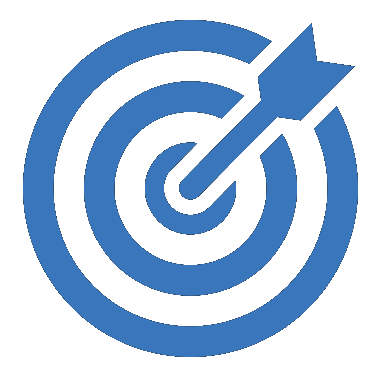
- Current environment summary
- Objectives & success metrics “size of the prize”
- Project process & timeline
- Scope & budget
- Core questions for field research
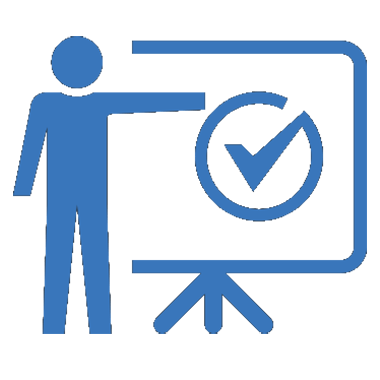
- Develop loyalty & trust hypotheses
- Loyalty drivers
- Associated attributes
- Pain points
- Build External & internal alignment
- Target response by segment
- List development Customer intro
- Develop Incentives
- Create Survey instrument
- Build a Community of Customers
Research
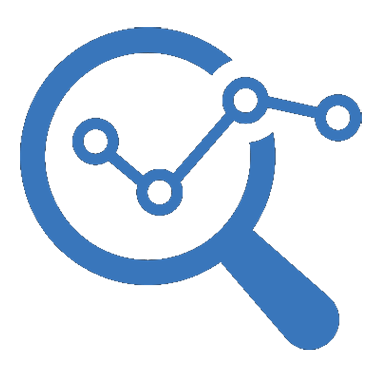
- Digital survey in waves (typically 2-4)
- Response monitoring
- Follow-up interviews where appropriate
- Incentive management
- Field closure
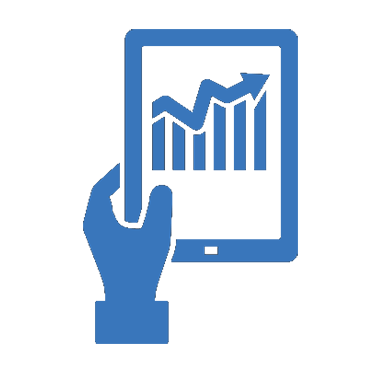
- Data summary
- Validated trust and loyalty drivers with impact ratios
- Corporate activities identified by the customer to impact drivers
- Customer at-risk assessment
- Identification of customer pain points
- Observations & findings
- Recommendations for action
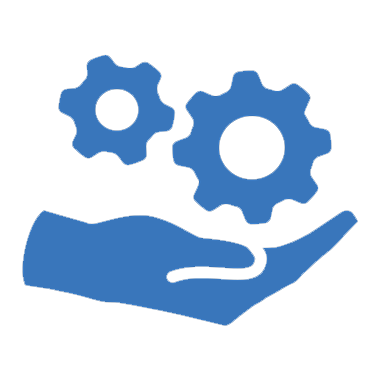
- Customer communication plan
- Customer presentation & script
- Engagement process
- Customer charter development & management
- Organizational change & management
- Progress review
- Track financial impact
Idea Engine
Get In Touch
We can help you achieve a customer-centric focus that is paramount
to the business success of any B2B organization. Contact us today to learn more!
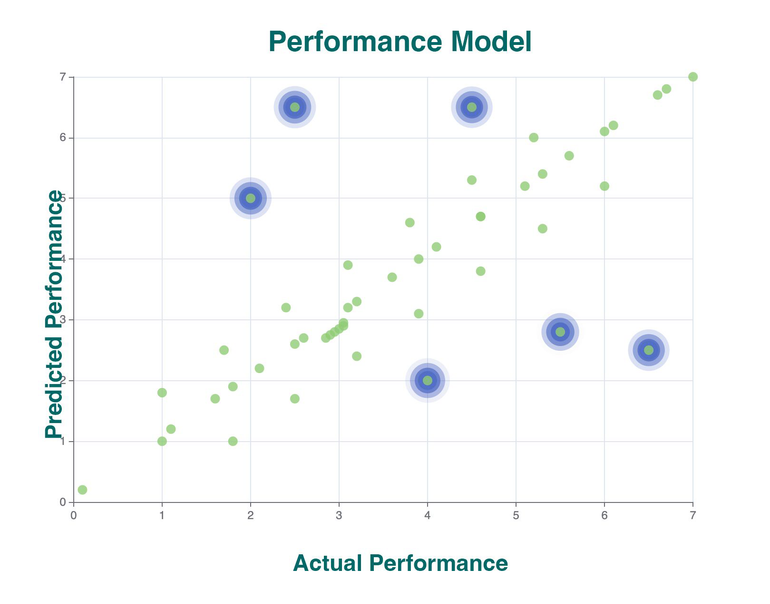
Contact Us...
Contact Us
We will get back to you as soon as possible.
Please try again later.
Our Office
Hunter Business Group, LLC
Investing in Relationships for Organic Growth
3645 S County Rd 200 W
Greencastle, IN 46135
Phone: +1.414.745.3848
Copyright © 2023 Hunter Business Group, LLC. All rights reserved | We trust
Distinct with our Website because of their Unlimited Support,
Client Testimonials, and
Website Maintenance Checklist.

